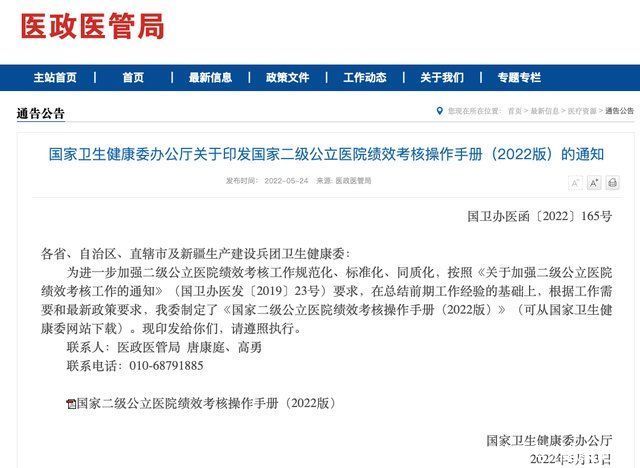(People’s Daily Health Client Reporter Tan Qixin) On May 24, the National Health and Medical Commission officially issued the “National Grade II Public Hospital Performance Assessment Operation Manual (2022 Edition)”. The relevant content of procurement equipment has been updated. On the basis of the original purchase amount of essential medicines, three additional items have been added: the proportion of essential medicines purchased, the proportion of essential medicine prescriptions used by outpatients, and the proportion of essential medicines used by inpatients. For the new assessment standard, the index orientation is “gradual improvement”.

The situation of commonly used drugs in primary medical institutions is not optimistic
The list of essential drugs means ” required”. However, what confuses many patients is that some medicines on the list of essential medicines are not easy to buy.
“Rituximab is not available in hospitals in the county, and can only be used in hospitals in the city.” On May 31, Lin Fan (pseudonym) of Luchuan County, Guangxi Tell the People’s Daily Health Client reporter that rituximab is a targeted drug against lymphoma and was included in my country’s Essential Drug List in 2018.
“The performance appraisal of public hospitals has always been called the ‘national examination’, and the assessment operation manual can be called the ‘pre-exam’. Consciously emphasize the importance of the ratio of basic drugs, but do not further refine the relevant requirements.” Professor Shi Luwen from the Department of Pharmacy Management and Clinical Pharmacy of Peking University School of Pharmacy mentioned in an interview with a reporter from the People’s Daily Health Client.
In October 2019, the General Office of the State Council issued the “986” policy, which requires the gradual realization of the proportion of basic medicines in government-run primary medical and health institutions, secondary public hospitals, and tertiary public hospitals. Not less than 90%, 80%, and 60% respectively, and promote medical institutions at all levels to form a “1+X” (“1” is the national essential drug list, “X” is non-essential drugs) medication model dominated by essential drugs .
However, the allocation of commonly used drugs in primary medical institutions is still not optimistic. In July 2020, Zhang Xiaojuan, an associate researcher at the School of Public Administration of Renmin University of China, conducted an investigation on the allocation and availability of antihypertensive and hypoglycemic drugs at the grassroots level. The availability was insufficient, and there were differences between urban and rural areas; The basic drugs for antihypertensive and hypoglycemic with better availability accounted for only 33.3% and 25%, respectively. Taking metformin as an example, it is the most accessible basic drug for diabetes treatment in primary medical institutions, but there are still about 5% of primary medical institutions unable to obtain the drug.

The pharmacist is sorting medicines. Xinhua News Agency
The variety and proportion of essential medicines are included in the assessment for the first time, and follow-up supporting measures are required.
“This assessment in secondary public hospitals Among the indicators, for the first time, it is of great significance to clearly include the number of varieties of essential medicines purchased and the proportion of their use in the assessment points and refine the relevant calculation methods,” Shi Luwen told reporters, considering that secondary hospitals are oriented towards grassroots and rural areas, and are in the first place in medical care. The front line occupies a large proportion in the entire medical and health system. After the implementation of the baton of hospital performance appraisal, it can not only force medical institutions to consciously increase the purchase and use of essential medicines, but also greatly promote the coverage of essential medicines in my country. The rate is higher, so that patients do not have to make detours in order to see a doctor, and can better meet the needs of hierarchical diagnosis and treatment.
An unnamed pharmacy expert who has been tracking medical reform for a long time pointed out to reporters that the basic drug system has a long chain, many links, many departments, and heavy coordination tasks. On the basis of refining the assessment indicators of public hospitals at all levels, it is necessary to follow up a variety of supporting measures, “For example, to make doctors and patients willing to use essential medicines, we should implement random inspections covering all varieties of essential medicines. , strengthen the supervision and inspection of production links and other measures to improve the quality and safety of essential medicines, and at the same time, through centralized procurement, medical insurance negotiation and other methods, make essential medicines truly cheap and high-quality essential medicines.”
Shi Luwen also emphasized that, Essential medicine is a system, which means that its improvement is a systematic project.
“Sustaining supply is the top priority. First, strong and stable industrial support is needed, and early prevention is an important measure to solve the problem of shortages, so as to provide patients with essential medicines that can be continuously produced and supplied; secondly, essential medicines The clinical use of medicines still needs to further improve the medication guidance and rational medication system; finally, essential medicines must ensure that patients can afford and use them, and the coordinated promotion of essential medicines protection policies is the key to the implementation.” Shi Luwen said.